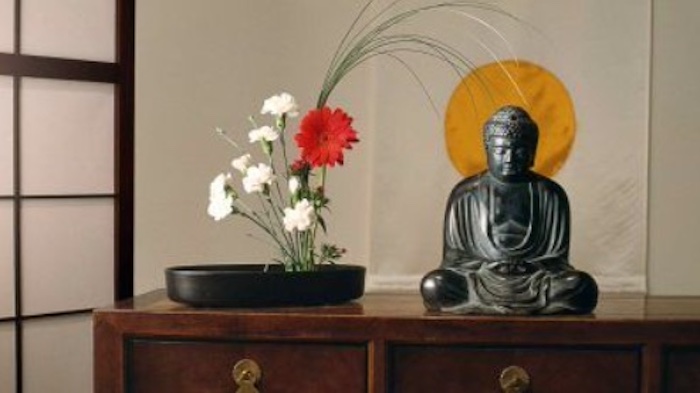Glossary of Terms
Commonly Used Shambhala Words and Phrases
(This is just a starting place for these words!)
Basic Goodness – Basic goodness is the openness inherent in every situation. The basic aspect indicates the primordial, self-existing nature of this quality. The goodness aspect indicates the faultless aspect of this quality
Bodhichitta – “Awakened mind” or “Awakened heart.”
Bodhisattva – “Enlightenment-being” or “Wisdom-being.” One who is dedicated to the path of cultivating bodhichitta and benefiting others.
Buddha – “Awakened One.” One who has achieved enlightenment. It is the title given to Shakyamuni, the historical Buddha born in India 2500 years ago.
Chögyam Trungpa Rinpoche – The founder of Shambhala Buddhism. Born in Tibet in 1939, he fled to India in 1959, when the communist Chinese invaded his country. He came to the West in 1963 and entered the US in 1970. Rinpoche died in 1987.
Contemplation – A calm and thoughtful way of pondering an idea.
Dorje Dradul – “Indestructible Warrior.” This is the Shambhala title for Chögyam Trungpa Rinpoche.
Dharma – Teachings that express universal truth, particularly the teachings of the Buddha.
Gatekeeper – Person who directs entry into the shrine room or meditation hall.
Gomden – A firm rectangular foam cushion used for sitting meditation. It was designed by Chögyam Trungpa for his Western students.
Great Eastern Sun – Represents the vision that wakefulness is always present. “The way of the Great Eastern Sun is based on seeing that there is a natural source of radiance and brilliance in this world – which is the innate wakefulness of human beings.” –Chögyam Trungpa
Lineage – A record of teachers and their students who pass on the dharma from generation to generation since the time of the Buddha. By saying “Shambhala Buddhist lineage,” we are describing our spiritual ancestry, which has its roots in Tibet.
MI – “Meditation Instructor.” A person trained and authorized to give meditation instruction.
Rinpoche – “Precious One.” A Tibetan honorific title used for any incarnate Lama.
Sangha – “A Community of practitioners working together” – Chögyam Trungpa
Sakyong – “Earth Protector.” The title used by the current spiritual leader of Shambhala. Sakyong Mipham Rinpoche is our current spiritual leader. The first Sakyong in our lineage was Chögyam Trungpa Rinpoche.
Sakyong Wangmo – “Lady Earth Protector.. The title refers to the consort/wife of the Sakyong. The current holder of this title is Khandro Tseyang Ripa Mukpo. The Sakyong and the Sakyong Wangmo were married in 2006 in Halifax, Nova Scotia. Their first child, Jetsun Drukmo, a daughter, was born in August, 2010. Their second daughter, Jetsun Yudra, was born in March 2013.
Shambhala Buddhism – is a union of the Kagyu and Nyingma lineages of Tibetan Buddhism with the Shambhala Teachings introduced by Chogyam Trungpa in the 1970s, based on the warrior tradition of Tibet’s legendary king Gesar.
Shambhala Training – The path of study and practice of Shambhala Warriorship introduced to the West by Chögyam Trungpa Rinpoche.
Shastri – The shastri’s role is to bring the current understanding of the Shambhala Buddhist vision and teachings to their centers, be a reference point for questions about the path, mentor and strengthen the local teaching mandala, and promote the vision of enlightened society.
Tibetan Buddhism – A form of Buddhism practiced in Tibet and other Himalayan countries. It is also called Vajrayana or Tantric Buddhism.
Timer – Person who times a meditation session.
Umdze – A Timer who also leads chants.
Vidyadhara – A term of honor referring to accomplished practitioners of tantra, meaning “holder of awareness.”
Warrior – Shambhala term for one who practices bravery, living openly and authentically with a tender heart, compassion, inquisitiveness, genuineness and humor.
Way of Shambhala – A structured path of meditation and teachings offering a complete introduction to the foundations of Shambhala Buddhism. Suitable for both beginning and experienced meditators, and open to people of any spiritual tradition, this series of weekend programs and evening classes provide a strong foundation in mindfulness-awareness meditation practice, wisdom teachings, and physical practices rooted in the ancient traditions of Shambhala and Tibetan Buddhism. Students are also be introduced to contemplative disciplines that make the teachings experiential—touching our emotions, our intelligence, our creativity, and the practical details of daily life in modern society. The programs are presented by experienced Shambhala teachers under the guidance of the Shambhala lineage-holder, Sakyong Mipham Rinpoche.
Zabuton – Rectangular flat cushion used under gomdens and other cushions for sitting meditation.
Zafu – Round mediation cushion.







